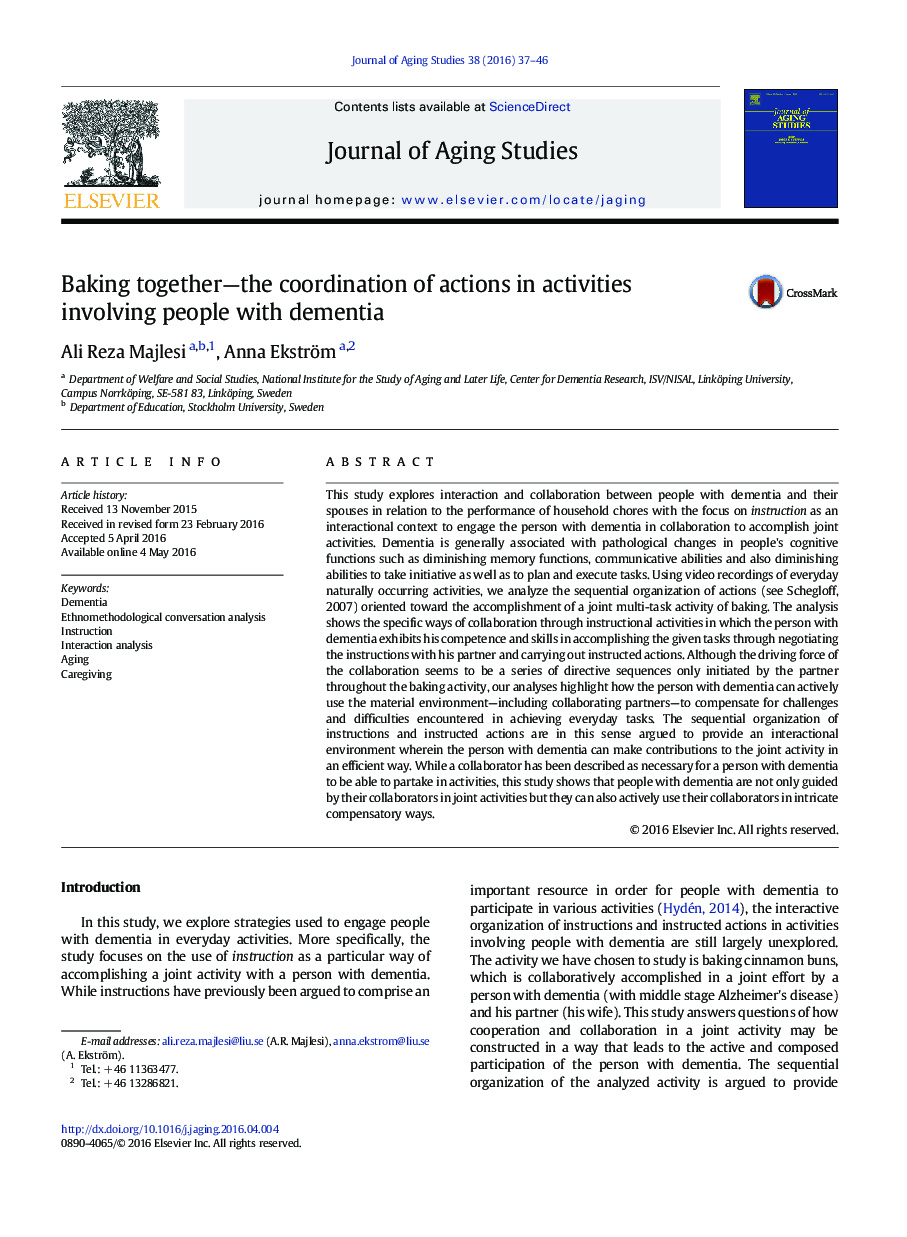| Article ID | Journal | Published Year | Pages | File Type |
|---|---|---|---|---|
| 1081753 | Journal of Aging Studies | 2016 | 10 Pages |
•Instructions construct affordances for active participation for people with dementia.•People with dementia are not receivers of care but collaborators in care activities.•People with dementia may use their partner as a resource in intricate compensatory ways.•Asymmetry of knowledge is exploited to develop collaborations in joint activities.•Caring is not just doing something for people with dementia but doing it with them.
This study explores interaction and collaboration between people with dementia and their spouses in relation to the performance of household chores with the focus on instruction as an interactional context to engage the person with dementia in collaboration to accomplish joint activities. Dementia is generally associated with pathological changes in people's cognitive functions such as diminishing memory functions, communicative abilities and also diminishing abilities to take initiative as well as to plan and execute tasks. Using video recordings of everyday naturally occurring activities, we analyze the sequential organization of actions (see Schegloff, 2007) oriented toward the accomplishment of a joint multi-task activity of baking. The analysis shows the specific ways of collaboration through instructional activities in which the person with dementia exhibits his competence and skills in accomplishing the given tasks through negotiating the instructions with his partner and carrying out instructed actions. Although the driving force of the collaboration seems to be a series of directive sequences only initiated by the partner throughout the baking activity, our analyses highlight how the person with dementia can actively use the material environment—including collaborating partners—to compensate for challenges and difficulties encountered in achieving everyday tasks. The sequential organization of instructions and instructed actions are in this sense argued to provide an interactional environment wherein the person with dementia can make contributions to the joint activity in an efficient way. While a collaborator has been described as necessary for a person with dementia to be able to partake in activities, this study shows that people with dementia are not only guided by their collaborators in joint activities but they can also actively use their collaborators in intricate compensatory ways.
